Ian Hamlinton: Unlocking the Secret Garden
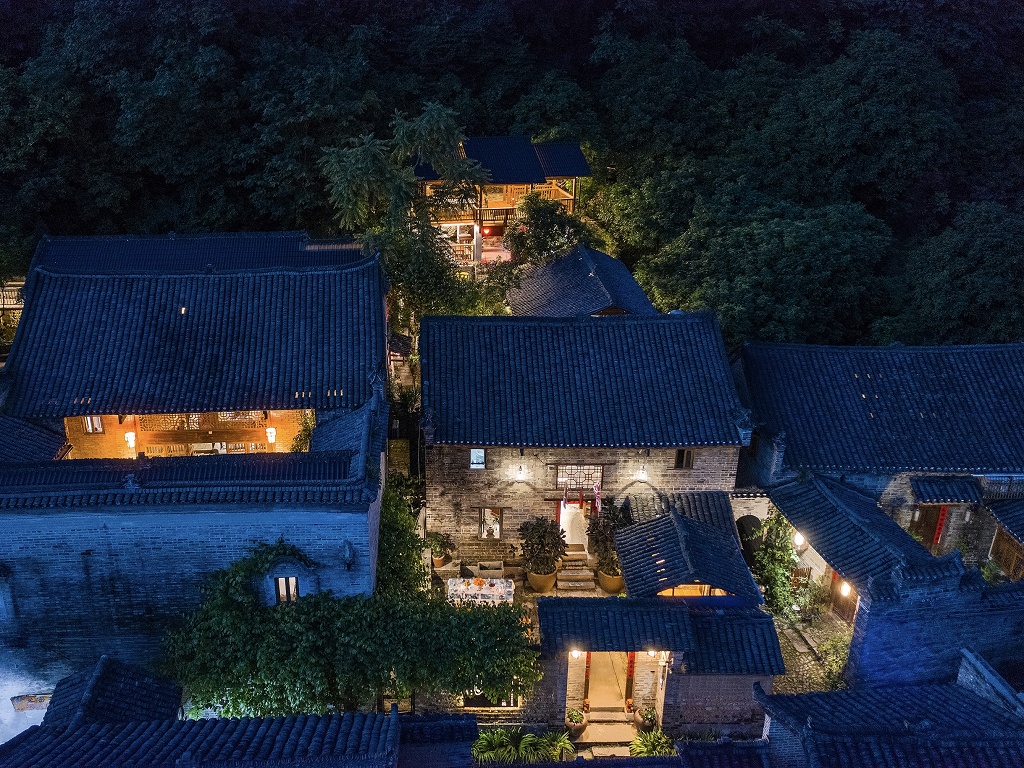
What would be the most mysterious, alluring place in your imagination?
When he was a primary school student, Ian Hamlinton was inspired by reading Secret Garden, a 1911 novel by Frances Hodgson Burnett: “…One of the things which made the place look strangest and loveliest was that climbing roses had run all over them (trees) and swung down long tendrils...”
After growing up, Hamlinton found a possible candidate to bring the concept to life: a cluster of centuries-old folk buildings in Jiuxian Village, Yangshuo County, southern China’s Guangxi Zhuang Autonomous Region. He toiled to convert them into his own Secret Garden, a boutique hotel, on a 20-year lease.
“The doors were shut, so I sort of climbed in through broken back windows and found an overgrown courtyard inside with a lot of roof tiles broken and some walls fallen down,” the South African architect recalled upon discovering the courtyard house in the winter of 2002. “My first thought was that it was just like the beautiful secret garden in the story and my long-held dream to live in this sort of building.”
The deep courtyard with its black tiles, gray bricks, and delicate landscapes captured Hamlinton’s heart immediately. He didn’t stay all at once, but came here again in July 2009 to rent two 200-year-old mountainside dwellings, including the courtyard house he found in 2002 and a small building behind it.
“But I don’t want my ‘Secret Garden’ to be a secret,” Hamlinton declared. “I would like everybody to come and enjoy and hopefully learn a little bit about the story and culture behind the buildings.”
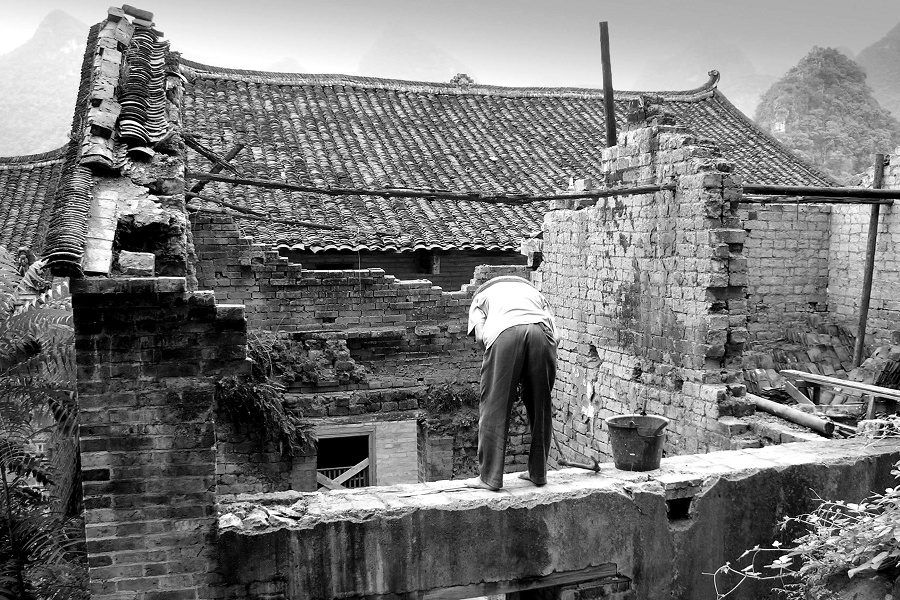
From the bricks and cement to the woodwork and furnishings, Ian Hamlinton personally renovates the dilapidated folk buildings with the help of three local villagers.
Preserving the Original
“They are useless,” said Hamlinton, mimicking those buildings’ owners. “Why would you want these old buildings?” His initial rental offer was met with surprise by the owners who endearingly nicknamed him “fengzi,” meaning “crazy man” or “madman” in Chinese, an implication of his deviation from the local norms.
Back then, Jiuxian Village was among the poorest areas in Yangshuo County and hosted crumbling gray-brick mansions and mud-brick farmhouses built during the Qing Dynasty (1644-1911) that were not eligible for government-funded protection. People tended to raze the old houses to build new ones. However, those old buildings tugged Hamlinton’s heartstrings harshly. He saw “amazing” potential in the thick-wall structures. They enable people to enjoy cool summer and warm winter inside and, most importantly, bond the whole family together.
Hamlinton’s original plan was to convert the old houses into his own settlement to welcome authors, photographers, and artists. But when he ran out of money for renovation after investing 120,000 yuan (US$17,220) on the lease, Hamlinton turned to partnering with local friends interested in investing in a possible village inn.
From the bricks and cement to the woodwork and furnishings in the houses, Hamlinton personally went to battle with the help of three local villagers. Realizing that “every house has its own character,” he used his own creativity to enhance the character by preserving the main structure and many of the original features while updating amenities that were lacking.
“Making a building beautiful is just like applying makeup after waking up in the morning, remembering how you have looked like already and imagining how you could improve on them,” Hamlinton said, explaining his logic when rejuvenating the old houses.
“None of the buildings here exist alone in a void,” he added. “You always have to be aware of the space between the buildings and what is next door or how it is related to mountains and fields.” For this reason, he used to look around the renovation site to observe where the sun sets or where the wind blows to get a feeling of what the original buildings looked like and imagine what the original designers would improve the buildings based on the materials currently available.

In Ian Hamlinton’s Secret Garden Hotel, modern elements such as abstract oil paintings and steel staircases complement traditional Chinese objects to keep the spirit of the original buildings alive.
Hamlinton innovated with anything he could scrounge up during the renovation. While digging at the back of the small building to lay pipes, for example, he discovered dozens of porcelain bowl pieces, with some even dating back to the Qing Dynasty. He embedded them in the house’s exterior walls, which unexpectedly created a beautiful sight. From the village’s older generation, Hamlinton discovered the history behind the findings: Since the house was built, when someone broke a bowl, he or she would throw the pieces out the back door, which happened for about two centuries or so. That’s why the deeper they dug, the older porcelain shards they found.
“It is such a beautiful part of the whole story,” smiled Hamlinton. “By integrating these bowls, we are preserving the whole history. I love everything to have a story.”
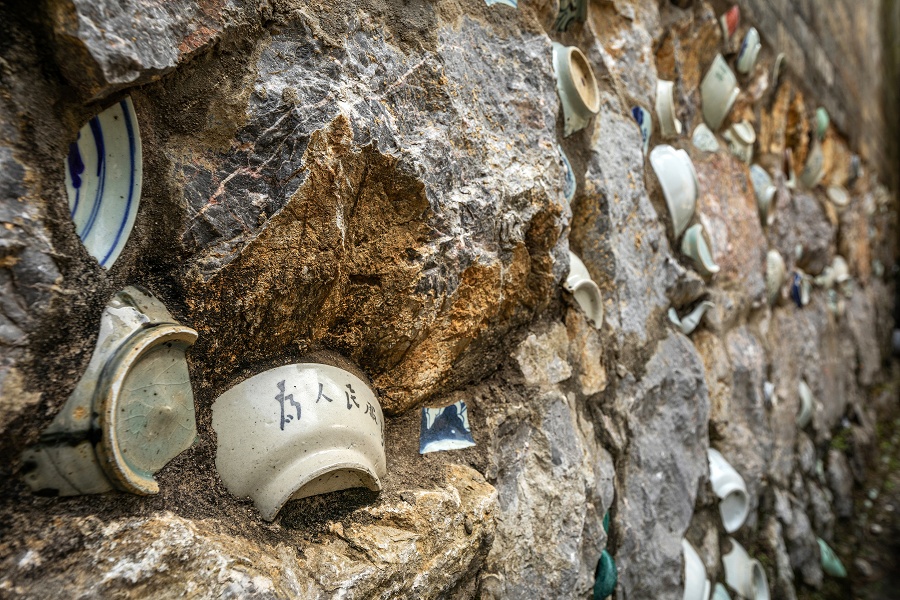
Dozens of unearthed porcelain bowl pieces are embedded in the exterior walls of a small building, representing a beautiful aspect of Jiuxian Village’s history.
The renovation project also leveraged old mud bricks, wooden fixtures, and trinkets that local villagers didn’t want any more. Old rice buckets were redeployed as storage boxes, and farmhouse threshing machines and door panels became interior decorations. They were free and environmentally friendly and, most importantly, reminded Hamlinton of the fact that the buildings preserved parts of every inhabitant’s story.
Unraveling the Secret
After nearly a year of renovation, Hamlinton’s first village inn opened for business in September 2011, named “Secret Garden.” After building popularity and earning profits, he started to refurbish four other dilapidated buildings in the village and finally expanded the Secret Garden Hotel into six houses with 18 guest rooms, a restaurant, and a small art gallery.
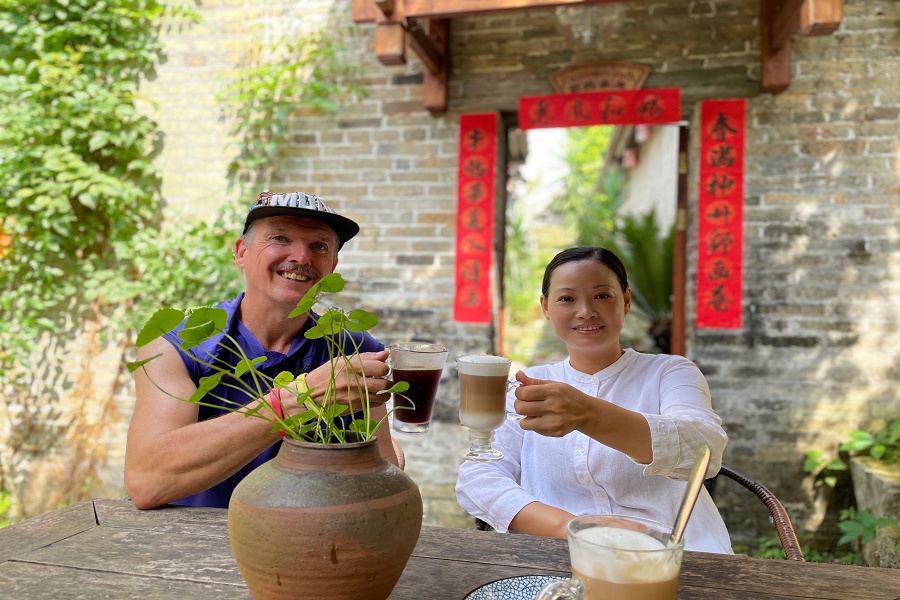
Ian Hamlinton enjoys leisure time with Mrs. Ding, a local villager and also manager of Secret Garden Hotel, in a courtyard next to the restaurant of the hotel. Providing employment opportunities for locals has been among the operational routines of the hotel.
Meanwhile, a nationwide survey of the country’s traditional villages was jointly launched by China’s Ministry of Housing and Urban-Rural Development and three other government departments in April 2012. Those villages crowned “living fossils” of farming civilization, mostly in backward areas, were seeing a sharp decline in number and suffering serious damage and pollution. After Jiuxian Village made the list of China’s national traditional villages with 645 others nationwide in December 2012, the local government was granted more than eight million yuan (about US$1.15 million) for restoring and protecting ancient houses as per the local culture and tourism bureau. The renovated houses have attracted more tourists to Jiuxian Village. Younger locals began returning for new job opportunities ranging from the homestay industry to renting bicycles and scooters.
“When I first started, there wasn’t much talk about conservation, and the village saw very few tourism activities,” said Hamlinton when speaking of the government’s efforts to integrate inclusive tourism development with poverty alleviation. “People just wanted to leave the village. I think the government actually helped quite a lot. They helped pave dirt roads with concrete, for example. I wouldn’t have achieved anything without them.”
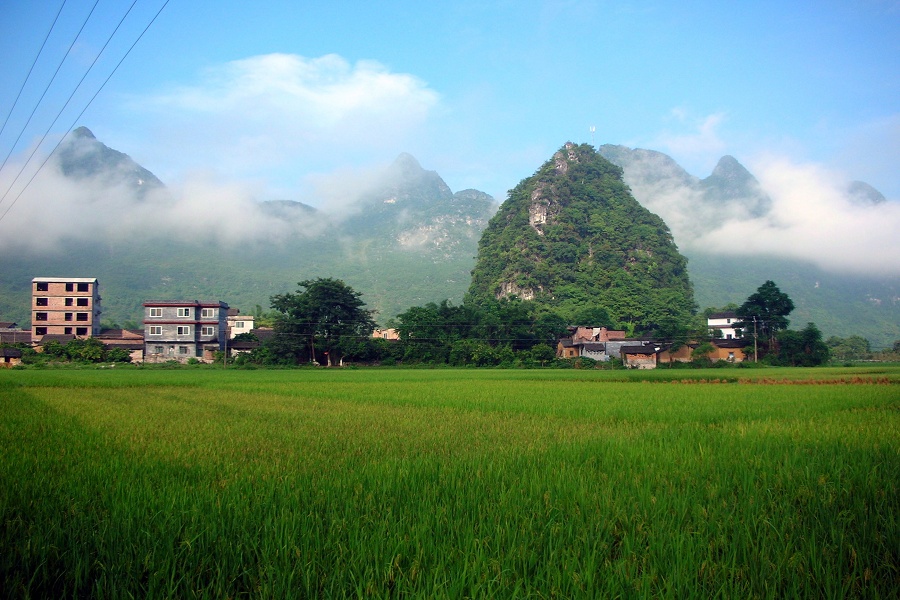
Paddy fields in Jiuxian Village, against a backdrop of local landscapes, which have lured increasing numbers of tourists in recent years.
Since 2018, the Chinese Commission for the International Council on Monuments and Sites (ICOMOS China) has classified rural accommodation projects in heritage environments under the guidance of China’s National Cultural Heritage Administration. The benchmark can be summarized as prioritizing heritage protection and jumpstarting forces of community development alongside qualifying business services. Hamlinton’s Secret Garden was honored to be included among the first wave of demonstration projects of Village Heritage Hotels.
In the novel Secret Garden, the three children plant seeds to revitalize the overgrown garden, and they grow healthier and happier through friendship and interaction with nature. That lovely spirit of protecting tradition, spreading beauty, and kindling happiness now has taken firm root in Jiuxian Village and much of rural China.